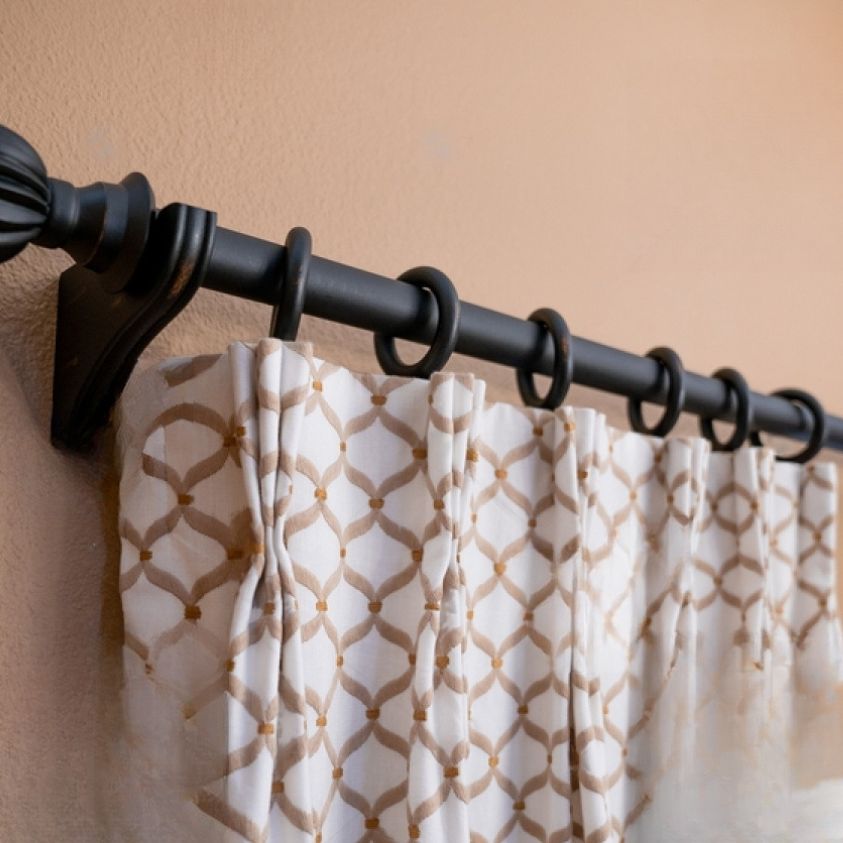
Small rooms can feel cozy and charming, but they also come with the challenge of making the most of limited space. When strategically designed, curtains can play a significant role in visually expanding the room and enhancing its overall appearance. In this guide, we’ll explore how you can use curtains to make a small room look bigger, along with some design tips and tricks to achieve the desired effect.
1. Opt for Light-Colored Curtains
Light-colored curtains, such as whites, creams, and pastels, are an excellent choice for small rooms. Light colors reflect more natural light and create a sense of openness. They make the room feel brighter and airier, which, in turn, creates the illusion of a larger space. Additionally, the light-colored curtains can complement various interior styles, making them a versatile choice. See this: https://www.blognewsgroup.com/neyrrtan/
2. Choose Sheer or Semi-Sheer Fabrics
Sheer or semi-sheer curtain fabrics allow more natural light to filter through while maintaining privacy. This transparency adds depth to the room and makes it appear more spacious. Sheer curtains create an ethereal effect, softening the boundaries between the indoor and outdoor spaces. The see-through quality of these curtains minimizes the visual interruption, making the room feel less cramped.
3. Hang Curtains High and Wide
One of the most effective tricks for making a small room look bigger is to hang the curtains as close to the ceiling as possible and extend them beyond the window frame. This draws the eye upward and creates the illusion of higher ceilings, giving the room a grander feel. Wider curtain rods also contribute to the effect by making the window appear larger and allowing more natural light to enter.
4. Use Vertical Striped Patterns
Vertical stripes on curtains can elongate the room and make the ceiling appear higher. This visual trick works well in both traditional and modern interior designs. When choosing striped curtains, opt for thin, subtle stripes to maintain a sense of sophistication and avoid overwhelming the space.
5. Minimize the Use of Heavy Fabrics
In small rooms, it’s best to avoid heavy, bulky curtain fabrics like velvet or thick damask. These materials can make the room feel more closed in. Instead, choose lightweight fabrics like linen, cotton, or silk that allow for easy draping and provide a sense of lightness.
6. Embrace Monochromatic Color Schemes
A monochromatic color scheme, where the curtains match the wall color or are slightly lighter or darker, can create a seamless, unbroken visual flow. This lack of contrast reduces visual disruptions and helps the room feel more expansive. Using the same color for both walls and curtains blurs the lines between the two, making the boundaries less distinct.
7. Limit Patterns and Prints
While patterns and prints can add character to a room, in small spaces, it’s essential to use them sparingly. Too many patterns can overwhelm the eye and make the room feel crowded. If you want to introduce patterns, consider using them as accents in throw pillows, rugs, or small decorative items rather than on the curtains.
8. Emphasize Vertical Lines in Design
Vertical lines in your curtain design can draw the eye upward, making the room appear taller. This can be achieved through the use of vertical stripes or by incorporating elements like vertical pleats or panels in the curtain design. Vertical lines create a sense of height and spaciousness, making the room feel more open. Visit us: https://dubaicurtain.com
9. Keep Curtains Simple
Simplicity is key when it comes to making a small room look bigger. Choose curtains with clean, simple lines and minimal frills or embellishments. Avoid heavy valances or elaborate swags that can overwhelm the space. A straightforward curtain design contributes to a more spacious and uncluttered look.
10. Reflect Natural Light with Mirrors
While not directly related to curtains, strategically placing mirrors in the room can help maximize the effect of curtains. Mirrors reflect natural light and create the illusion of depth, making the room feel larger. Placing a mirror across from a window enhances the sense of space and amplifies the light that enters through the curtains.
11. Consider Double Curtain Rods
Double curtain rods allow you to layer sheer curtains with thicker, room-darkening or blackout curtains. During the day, you can pull back the heavy curtains to allow natural light to flow through the sheers, creating a sense of spaciousness. In the evening, you can close the heavier curtains for privacy and light control.
12. Utilize Full-Length Curtains
Choosing full-length curtains that touch or pool slightly on the floor can visually elongate the walls, making the room feel taller. This is especially effective in small spaces where short curtains can create a squat, cramped appearance.
13. Install Curtains Outside the Window Frame
To create the illusion of larger windows, install your curtain rods slightly above and wider than the window frame. This tricks the eye into perceiving the window as more extensive than it actually is, expanding the perceived size of the room.
14. Embrace Minimalist Furniture
In a small room, it’s essential to keep furniture to a minimum and opt for pieces with clean lines and a minimalist design. Avoid overcrowding the space with oversized or heavy furniture, as this can counteract the benefits of the curtains.
15. Use Translucent Curtains for Division
In open-concept spaces or studio apartments, you can use translucent or semi-sheer curtains as room dividers. These curtains create separation while maintaining a sense of flow and spaciousness.




